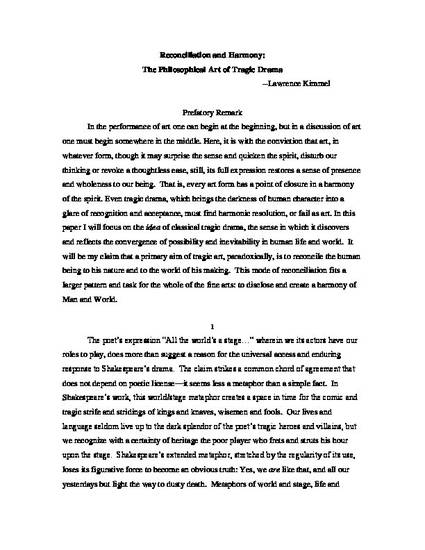
In the performance of art one can begin at the beginning, but in a discussion of art one must begin somewhere in the middle. Here, it is with the conviction that art, in whatever form, though it may surprise the sense and quicken the spirit, disturb our thinking or revoke a thoughtless ease, still, its full expression restores a sense of presence and wholeness to our being. That is, every art form has a point of closure in a harmony of the spirit. Even tragic drama, which brings the darkness of human character into a glare of recognition and acceptance, must find harmonic resolution, or fail as art. In this paper I will focus on the idea of classical tragic drama, the sense in which it discovers and reflects the convergence of possibility and inevitability in human life and world. It will be my claim that a primary aim of tragic art, paradoxically, is to reconcile the human being to his nature and to the world of his making. This mode of reconciliation fits a larger pattern and task for the whole of the fine arts: to disclose and create a harmony of Man and World.
